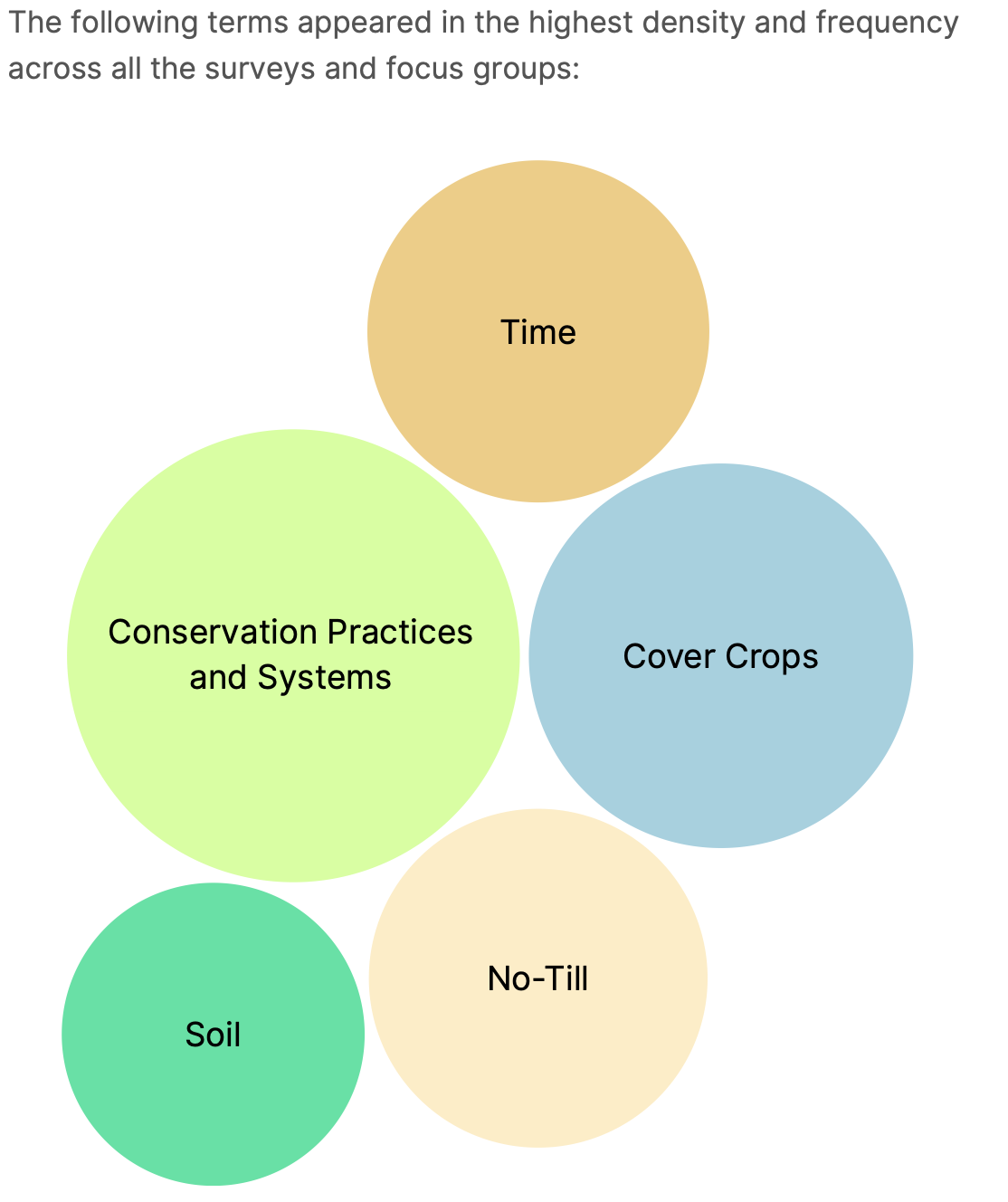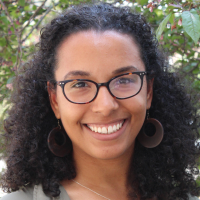
What Questions Do Michigan Agriculture Professionals Have About Conservation Agriculture?
DOWNLOADOctober 22, 2025 - Christine Charles, Elizabeth Schultheis, Brook Wilke, Tayler Ulbrich, Nameer Baker and Sarah Zeiler
This Report Is For You If...
- You work with farmers.
- You want to help promote the adoption of conservation practices.
- You have data that can help answer important questions from farmers and agricultural professionals.
- You are a scientist or organization looking to inspire your work with real issues and questions from practitioners.
Summary of the Project
Agricultural advisors and educators need relevant, science-backed information to meet the needs of Michigan farmers—especially in using conservation practices like no-till farming, cover crops, and expanded crop rotations. However, barriers such as policy constraints, economic pressures, and lack of knowledge often limit adoption.
To support technical experts, agronomists, and farmers, we aimed to understand the science and knowledge they need to successfully apply conservation agriculture. We conducted a series of facilitated conversations and surveys with agricultural advisors and outreach professionals to identify the most pressing questions and challenges faced by Michigan farmers.
Our goal is to use 30 years of research at MSU’s W.K. Kellogg Biological Station (KBS) to help advisors and educators share useful, science-based information with farmers—encouraging adoption of environmentally beneficial and economically viable practices.
Objectives
- Analyze existing datasets for practical answers.
- Present past research in new educational materials.
- Inform new research directions based on stakeholder needs.
By sharing these findings, this assessment supports collaborative efforts to strengthen conservation practice adoption across Michigan.
What We Did
We worked with groups that directly advise farmer audiences, including Michigan Conservation Districts, MSU Extension, and crop advisors. Two focus groups and three surveys were conducted with responses from 66 participants, leading to five key areas for further research and education.
Priority Areas Across All Questions

1. Conservation Practices and Systems
- Local examples and on-farm trials
- Supporting farmers new to conservation
- Managing risk and complex agronomy
- Changing social dynamics around conservation
- Economics and profitability of conservation
2. Cover Crops
- Integrating covers into crop rotations
- Starting and establishing successful cover crops
- Understanding species options and benefits
- Evaluating agronomic and economic value
3. No-Till
- Adjusting management (chemistry, rotations, planting, equipment)
- Rotational or reduced tillage outcomes
- Social resistance to no-till
- Long-term results and sustainability
4. Time
- Managing increased fieldwork and learning curve
- Setting realistic timeline expectations
5. Soil
- Using soil health indicators for management
- Adapting management to diverse soils and climates
- Preventing soil loss and degradation
What Prevents Adoption of Conservation Practices?
Conservation professionals identified several barriers—grouped into four major themes:
Agronomic Barriers
Concerns about yield loss, disease, pest outbreaks, short planting windows, and limited resources for specialty crops (e.g., sugar beets) are common. Tillage remains valued for residue management and soil warming, raising doubts about reduced tillage’s effectiveness.
Economic Barriers
Uncertainty about profitability, lack of markets for diverse rotations, and high upfront costs for new equipment deter adoption. Time and paperwork for cost-share programs can also discourage participation.
Ecological Barriers
Farmers need locally relevant, field-specific research. Weather extremes complicate long-term planning, and skepticism remains about measurable environmental and business benefits.
Social Factors
Tradition, community norms, and risk aversion slow behavioral change. Conservation practices may be perceived as competing with core business priorities or taking valuable land out of production.
Information and Education Needs
Advisors identified missing information they need to better support farmers, including:
- Timeline expectations for yield and financial payback
- Performance of cover crops and no-till systems in extreme weather
- Best crop rotations for new practices
- Farm-level climate resilience strategies
Established Topics for Renewed Outreach
- Herbicide management in tilled vs. no-till systems
- Regional examples of successful conservation practices
- Profitable cover crop integration
- Species options for late-season cover crop planting
Questions Lacking Long-Term Answers
Using KBS’s 30+ years of research, participants wanted insights into:
- Nitrogen fixation and nutrient cycling from cover crops
- Financial investments required for conservation transitions
- Timelines for building soil organic matter
- Effects on water use efficiency and carbon sequestration
- Comparisons of continuous vs. flexible conservation management
Desired Research and Programs
- Evaluating yield and ecological outcomes from low-input systems
- Grading cover crops by their ecosystem service potential
- Quantifying and rewarding farmers for conservation benefits
- Measuring phosphorus and nitrogen cycling in varied management systems
- Assessing soil health improvements across different field zones
- Exploring intercropping logistics and profitability
In Summary
The findings strengthen pathways to address climate change, biodiversity loss, and sustainability challenges in Michigan agriculture. Long-term KBS datasets are vital to answering many of these questions—but collaboration across institutions and stakeholders is essential to advancing conservation adoption statewide.
What’s Next?
Insights from this project will shape future research priorities, guide re-analysis of long-term datasets, and inform new outreach and extension initiatives. Together, these efforts aim to build a stronger bridge between science, conservation, and on-farm decision-making.
Funding Acknowledgment
This work was supported by the Advancing Public Engagement Across LTERs (APEAL) grant and a Michigan State University Agriculture and Agribusiness Extension grant through Project GREEEN (Generating Research and Extension to meet Economic and Environmental Needs).
Contact
For inquiries, contact:
Christine Charles
Email: charl122@msu.edu
Website: www.canr.msu.edu/outreach



 Print
Print Email
Email




